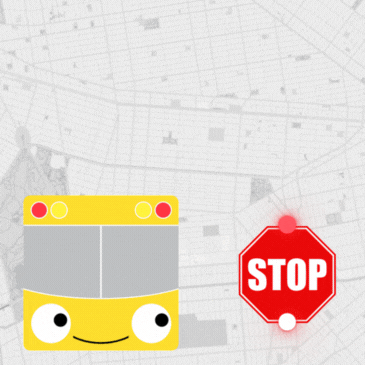
Battle over rebbe’s legacy
More Lubavitch bashing in the public media
Followers are split in a bitter dispute that’s made its way into the courts
Eleven years ago, the Rebbe Menachem Mendel Schneerson – the charismatic Lubavitch leader known simply as “the Rebbe” – was buried in Old Montefiore Cemetery in Queens.
Many expected that to be the end of a movement that had regarded him as the Jewish Messiah.
But on the anniversary of the rebbe’s death, the group that heralds him as the long-prophesied Messiah has not faded away. In fact, within the Lubavitch community, the split between messianists and non-messianists has become increasingly acrimonious: Acts of vandalism and pushing matches between messianists and police and private security have occurred repeatedly outside the downstairs synagogue at 770 Eastern Pkwy. in Crown Heights, the red-brick building that is the symbolic heart of the movement.
The most recent incident occurred a week ago Tuesday, when a commemorative plaque on the building’s front wall that referred to the rebbe in the past tense, as “blessed memory,” was ripped out, leaving an ugly hole.
In an even rarer development in the insular Lubavitch community, the dispute has spilled into the secular courts with the criminal prosecution of those charged with vandalizing the plaque, and with litigation in State Supreme Court in Brooklyn over who controls the synagogue considered a holy site by Lubavitchers.
All this is happening, meanwhile, on the eve of the anniversary, or yahrzeit, of the rebbe’s death, which was June 12, 1994, according to the Gregorian calendar. By the Jewish calendar it begins at nightfall tomorrow, when thousands are expected to go to pray at the rebbe’s grave in Cambria Heights.
“I cannot tell you how utterly painful and gut-wrenching this is,” said Rabbi Zalman Shmotkin, a spokesman for Lubavitch world headquarters. “But Lubavitch has survived many things over the years, from Czarism to Stalinism to Nazism. And while this is painful, we will survive this, too. At the end of the day, this does not make or break what an emissary does in Commack or Coram.”
Rebbe’s legacy
Many within the movement regard the increasingly fractious dispute as a public relations disaster. The movement, though numbering a couple of hundred thousand people, has an outsized role in worldwide Jewish life, with an annual budget of almost $1 billion dollars – much of it contributed by Jewish philanthropists – for missions, or Chabad houses, in 45 U.S. states and 69 countries.
“Surely the Rebbe’s legacy has been tarnished beyond repair by you and your ilk,” one man accused messianists on a Hasidic Web log, one of numerous such arguments circulating on the Internet in recent months. “The man once considered as a leader of world Jewry will now be remembered as the leader of a cult of messianiac lunatics.”
But those who count themselves messianists are equally adamant that their view reflects the majority and that they are the rightful heirs to the rebbe’s legacy.
“Everybody here believes the Rebbe is the Moschiach,” said Sara Kanevsky, 37, of Crown Heights, who was among nine people arrested Dec. 15 when she tried to stop workers from installing a plaque that was identical to the one that had been removed by yeshiva students the month before because it referred to the rebbe as “in blessed memory.”
The messiah controversy
Discussion about the coming of a messiah is nothing new for the Lubavitch community, a charismatic Orthodox movement with roots in 18th century Russia. While Schneerson was alive, he encouraged his followers to work for the perfection of this world in order to hasten the Messiah’s coming. Toward the end of his life, though, he was disabled by a stroke and could no longer reply to those who called him Messiah – thus, both factions today insist he endorsed their view.
The issue is even more heated since his burial because Jews, unlike Christians, are taught to believe that the Messiah will be revealed during his lifetime. The notion that a man who died could lead the way to salvation is considered heretical by most Orthodox scholars.
Yet few deny that messianists now control the downstairs synagogue at 770 Eastern Pkwy., in addition to several Lubavitcher schools in Crown Heights. On a recent visit to the synagogue, scores of men dressed in black suits danced joyously around a yellow banner emblazoned with a crown, the messianists’ emblem. A banner across one wall proclaimed in Hebrew, “Long live our rebbe, our teacher, our master, King Messiah, forever and ever.”
Non-messianists insist that group is a small but vocal minority in Crown Heights and Israel, and that they are not part of the organization’s leadership. “The people who do not believe in this craziness do not make noise,” said one man wearing the Hasidic uniform of a black fedora, white shirt and black suit, walking near the synagogue recently.
Taking it to the courts
The claims and counterclaims now are being heard in a court case brought late last fall by Merkos L’Inyonei Chinuch Inc., the worldwide Lubavitch educational organization. Merkos sought an injunction against the group of young Israeli messianists it claimed had vandalized the building, including defacing and removing the plaque commemorating Schneerson, as well as against their supporters.
Since then, other Lubavitch groups have asked the judge, Ira Harkavy, to dismiss the case, saying it is about a theological controversy rather than property rights and has no place in a civil court. The case is pending.













